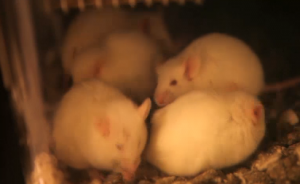
(Reuters)– Using the power of regenerative medicine, a team of scientists have been able to effectively cure a mouse of diabetes.
The research, led by Dr. Sheng Ding of the Gladstone Institute in San Francisco, uses a new method to decode and genetically modify skin cells into insulin producing beta cells.
Type 1 diabetes, which usually manifests during childhood, is caused by the destruction of beta-cells, which normally reside in the pancreas and produces a hormone called insulin. Without insulin, the body’s organs have difficulty absorbing sugars, such as glucose, from the blood. Once a death sentence, the disease can now be managed with regular glucose monitoring and insulin injections. A more permanent solution, however, would be to replace the missing beta-cells. But these cells are hard to come by, so researchers have looked towards stem cell technology as a way to make them.
Director of the Institute, Dr. Deepak Srivastava says Dr. Ding’s research, turning skin cells into beta-cells, paves the way to developing a new way to battle diabetes.
“He has been able to create a cell that is not a stem cell but is derived from, in this case, an animals’ own cell and transplant it back into the animals and have it essentially cure itsdiabetes,” he said.
To accomplish this, the researchers extracted skin cells from the mouse and used a two phase process to reprogram them into what they call PPLC cells.
After the skin cells were extracted they were reprogrammed into endoderm cells, a type of cell that has the ability to mature into organs. These endoderm cells were then reprogrammed again into PPLC cells and transplanted back into the pancreas of a diabetic mouse.
After just eight weeks, the cells matured into insulin producing beta cells that soon began regulating the animal’s blood sugar levels, essentially curing it of diabetes.
Dr. Srivastava says his team are now testing the reprogramming protocol on human cells to see if they respond in the same way.
“I think this is a major step forward because we haven’t has this type of success even in an animal model in the past. There will be many hurdles ahead to see of this works in humans and test all of the safety issues. But there is reason for a lot of hope for the millions of people out there suffering from diabetes,” he said.
Improving technologies are increasingly helping diabetics monitor glucose levels in their blood and manage their disease, but the Gladstone scientists believe that while there are years of research still ahead, they may be on track to produce a cure.







